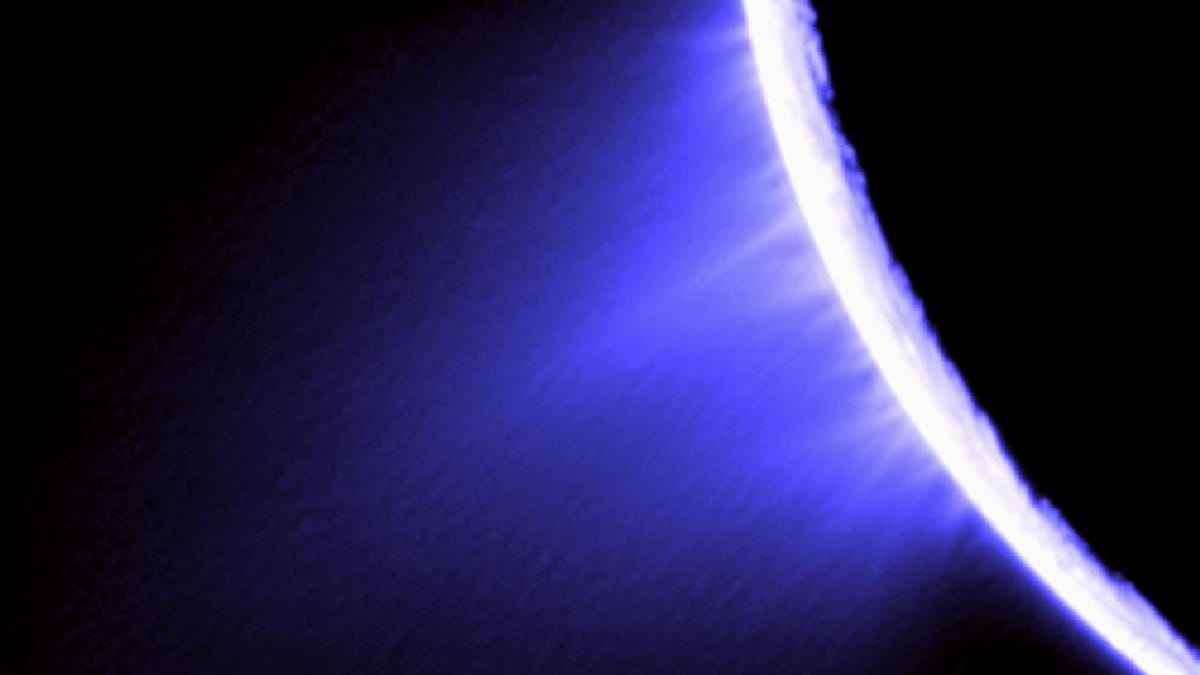Saturn moon's long-heated ocean may have cooked up life
Enceladus has a hidden warm water ocean, and new research finds it's likely been that way for awhile, perhaps long enough for some aquatic residents to evolve.

Saturn's moon Enceladus looks to be warm and wet beneath its thin frozen skin, and according to a new study, it's possible the distant world's internal heat source has been in place for billions of years -- long enough for some kind of alien aquatic life to evolve beneath its icy shell.
Enceladus and the mysterious plumes of material that issue forth from cracks in its otherwise wintry surface have fascinated astronomers and astrobiologists for years. In 2015, NASA's late Cassini spacecraft cruised through the spray to see what information it could collect. Analysis of the data gathered that day led to the exciting announcement earlier this year that Enceladus' hidden ocean appears to possess the chemistry and heat source needed to support life. Notably though, no evidence that life is actually present has been found just yet.
But besides heat, water and the right collection of molecules, life as we understand it needs one other thing: a really long time to develop.
Enceladus' subsurface sea could stay warm thanks to tidal forces that slosh the water around, circulating it through a porous core where rocks rubbing together generate friction heat that then rises toward the surface, according to the new research published by an international team in Nature Astronomy on Monday. Most important for the potential of life in Enceladus, though, is the finding that this heating system "can be sustained for tens of millions to billions of years," according to the study's abstract.
How water may be heated inside Saturn's moon Enceladus.
Life on Earth is believed to have emerged within less than half a billion years of our planet's formation. If Enceladus has truly been a warm bath-world circling Saturn for many millions or even billions of years with the right chemistry to support life, it becomes a prime target in the search for life beyond Earth.
"Future missions capable of analyzing the organic molecules in the Enceladus plume with a higher accuracy than Cassini would be able to tell us if sustained hydrothermal conditions could have allowed life to emerge," Nicolas Altobelli, the European Space Agency's Cassini project scientist, said in a statement.
The decision to end the Cassini mission with a suicide dive into Saturn's atmosphere was made in part to protect Enceladus and other satellites in the system that might harbor life from contamination by a wayward spacecraft impact.
There is one more big unanswered question about Enceladus and its potential to hide life under its icy exterior. We're not exactly sure how long Saturn's moons have been around.
A paper published in 2016 suggested Enceladus may be only 100 million years old. It's highly unlikely anything, even microbes, were swimming around on Earth in its first 100 million years, but then again, our planet was probably dealing with the handicap of heavy bombardment from all sorts of space debris leftover from the planet formation process.
The bottom line: The closer we look, the more Enceladus sure seems like a comfy and cozy place for life to make a new start. But we're still going to have to look much closer to see if it's actually swimming around there today or not.
Technically Literate: Original works of short fiction with unique perspectives on tech, exclusively on CNET.
Crowd Control: A crowdsourced science fiction novel written by CNET readers.

